Tidenham Tunnel
Tidenham Tunnel
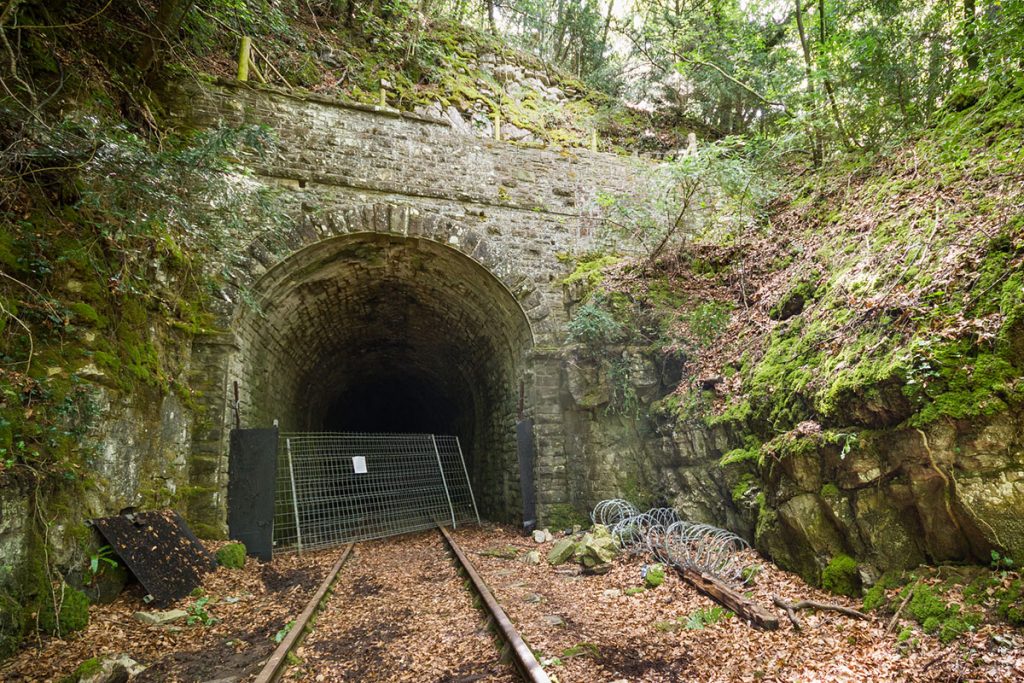
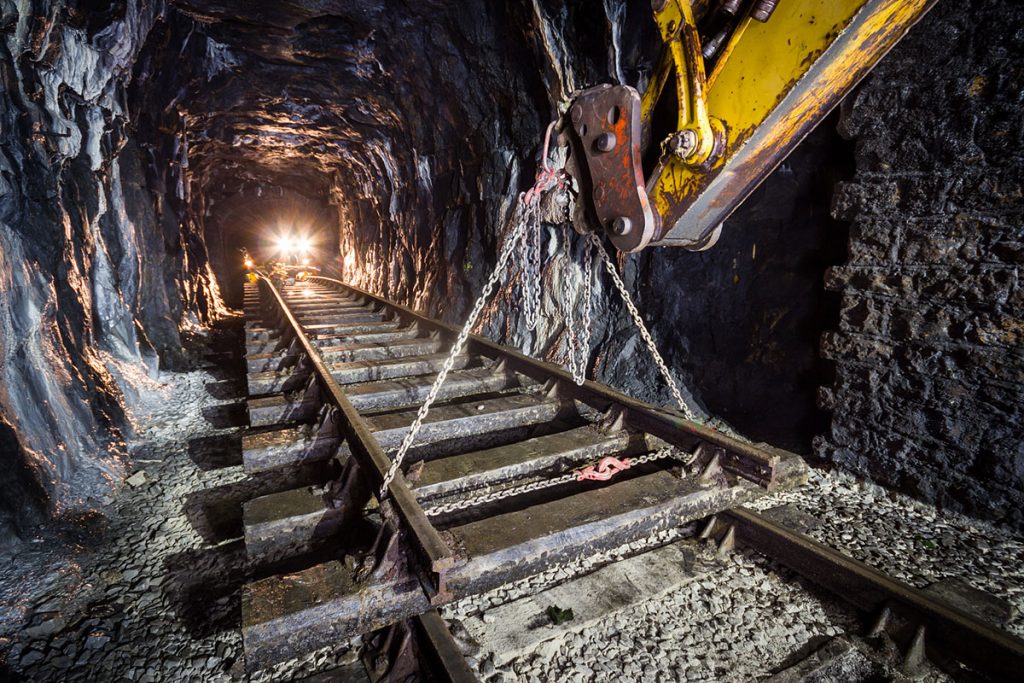
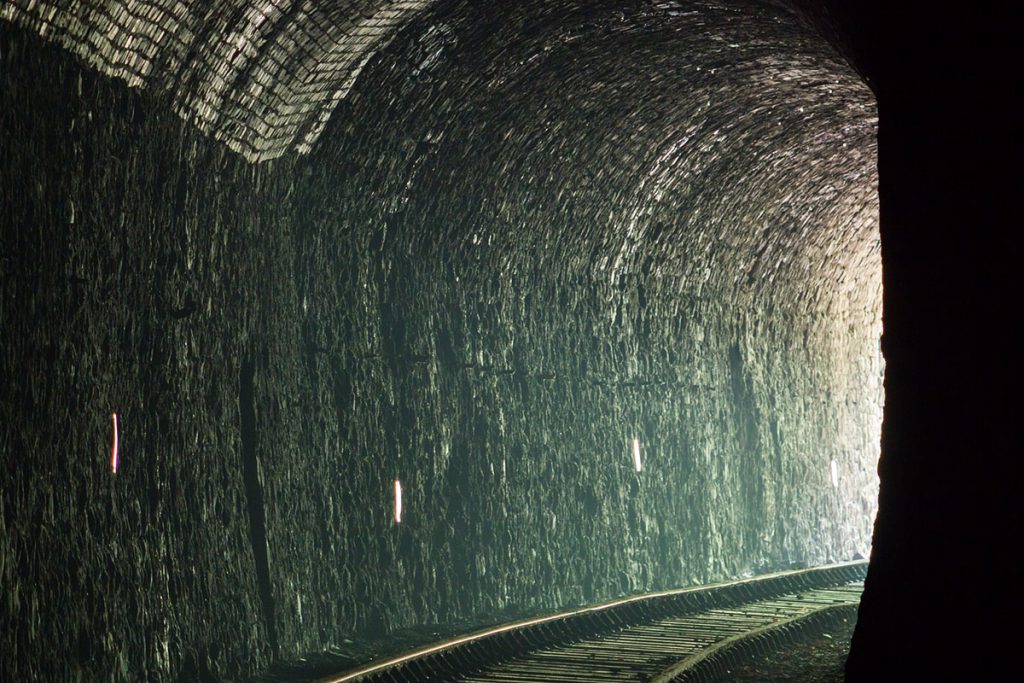

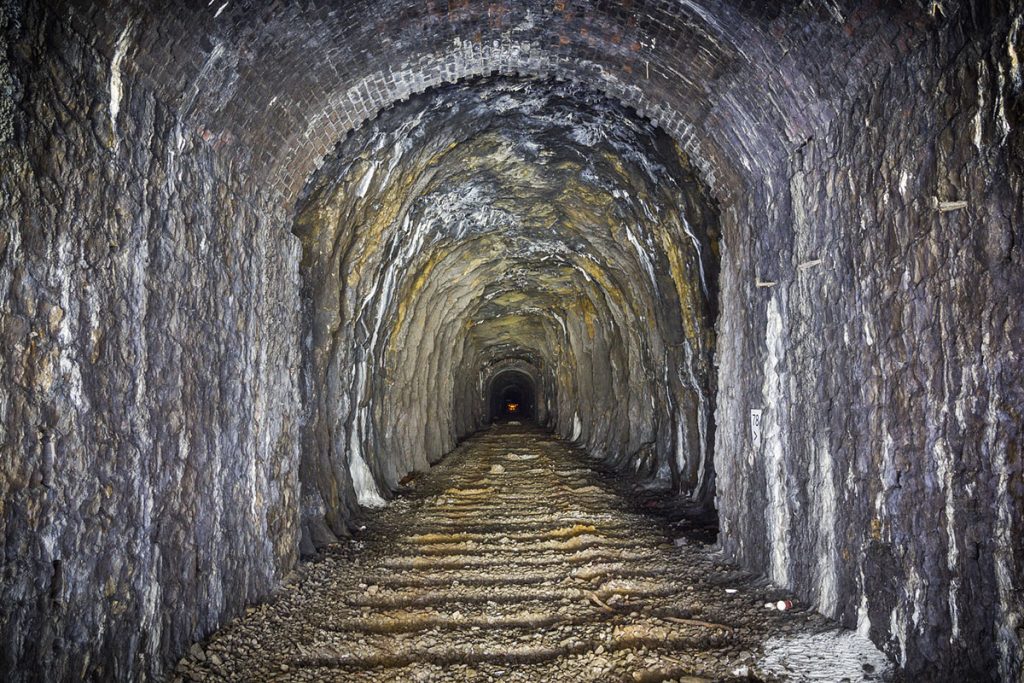
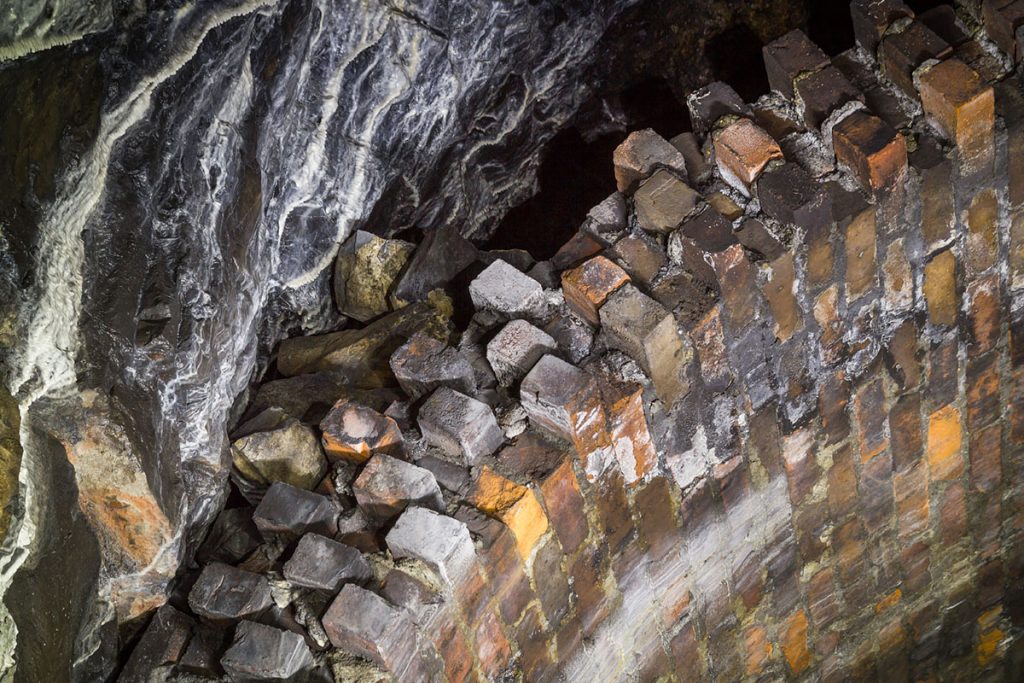
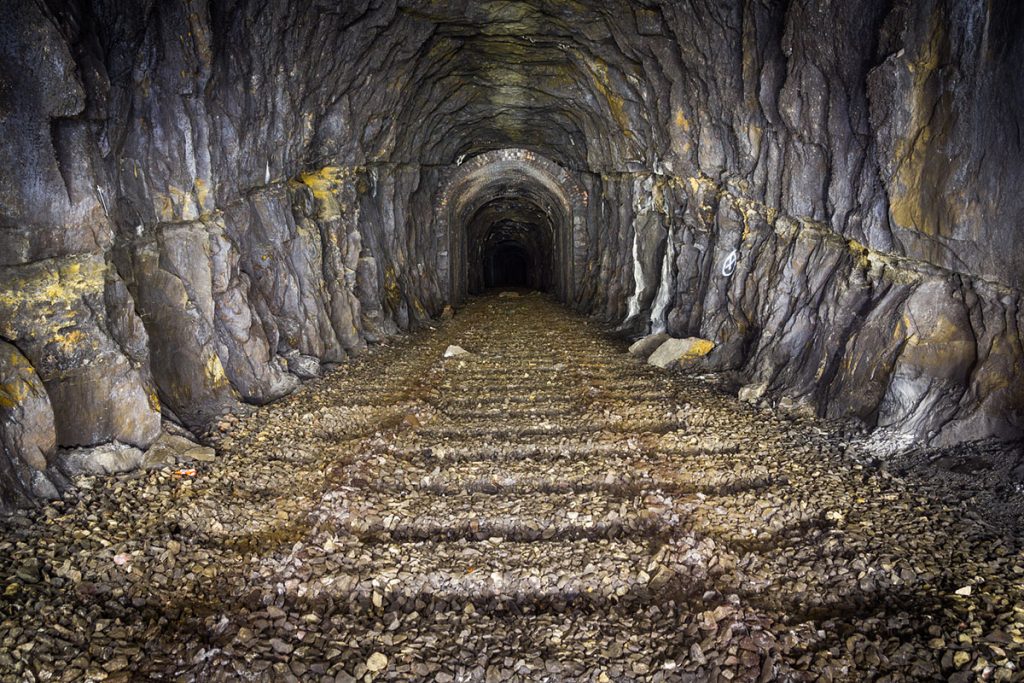
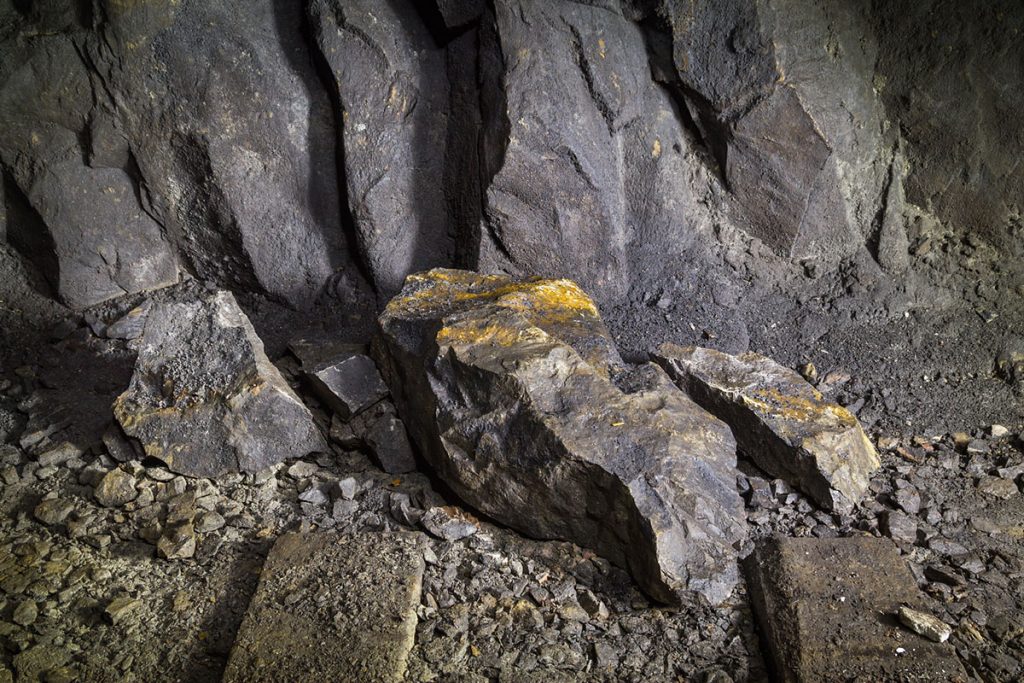
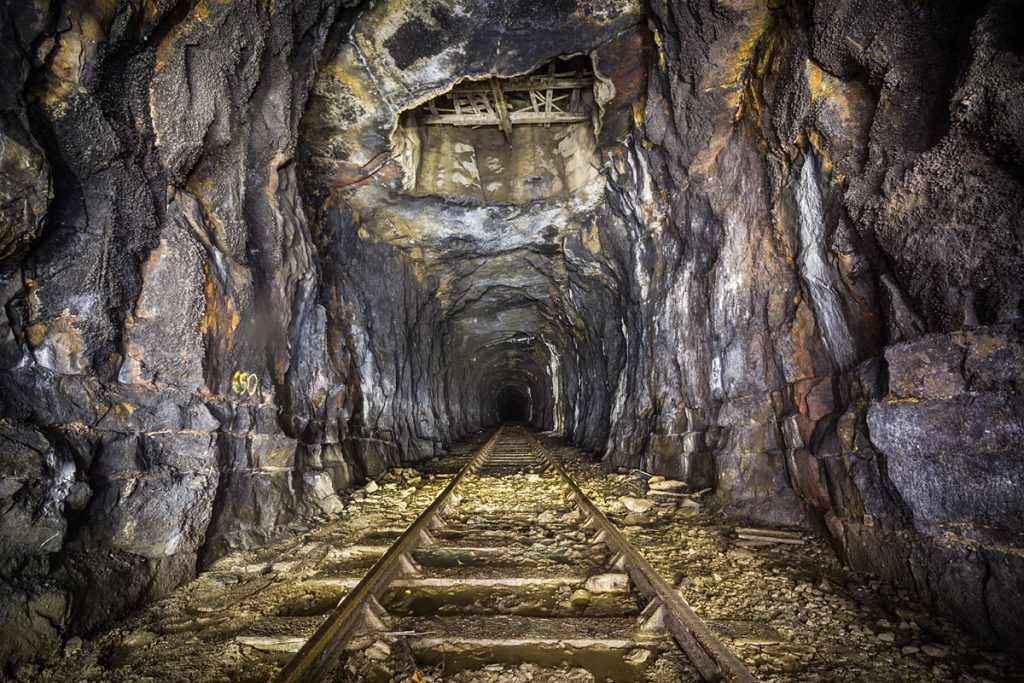
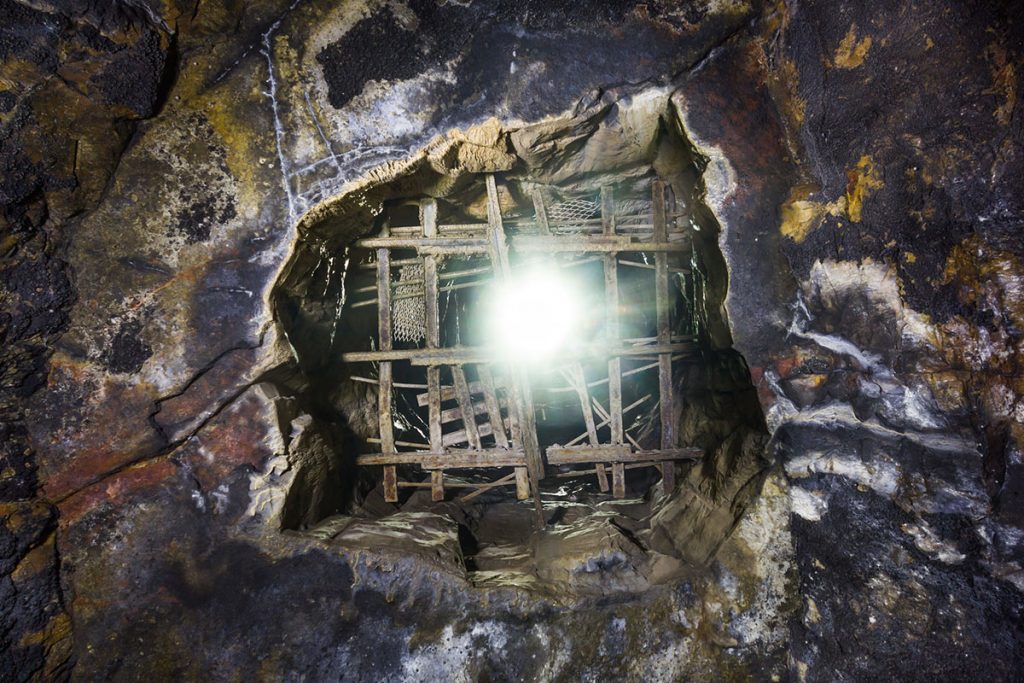
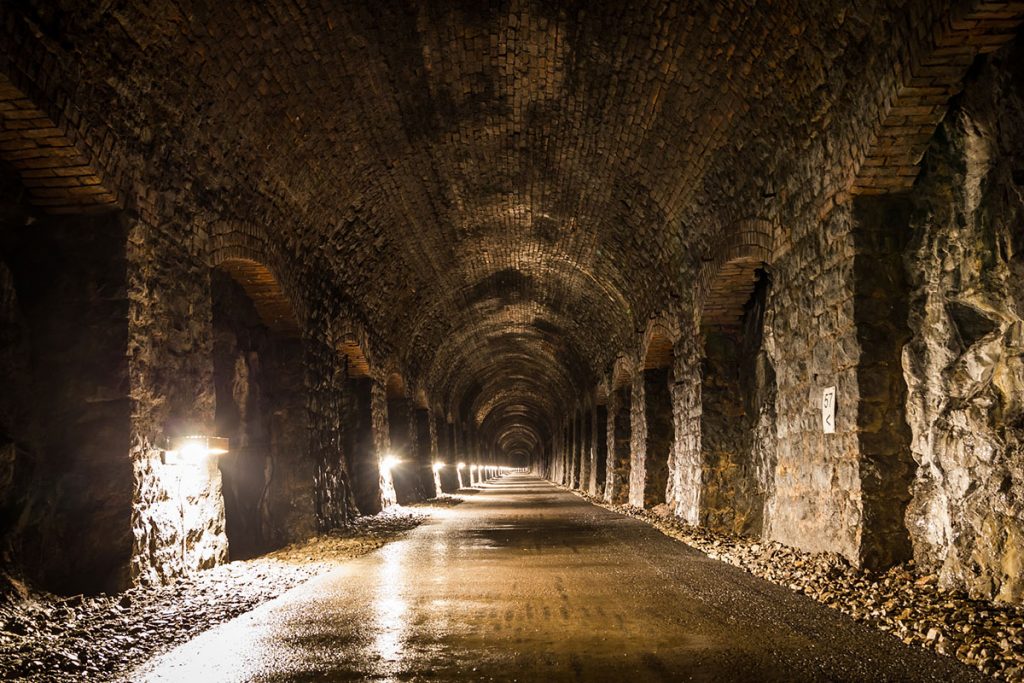
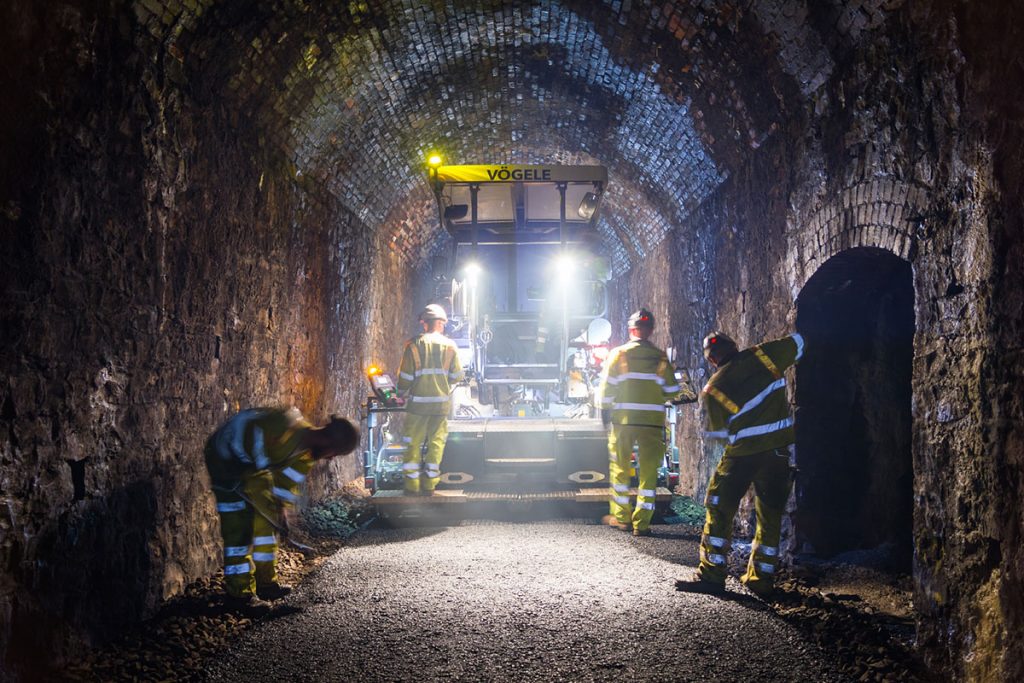
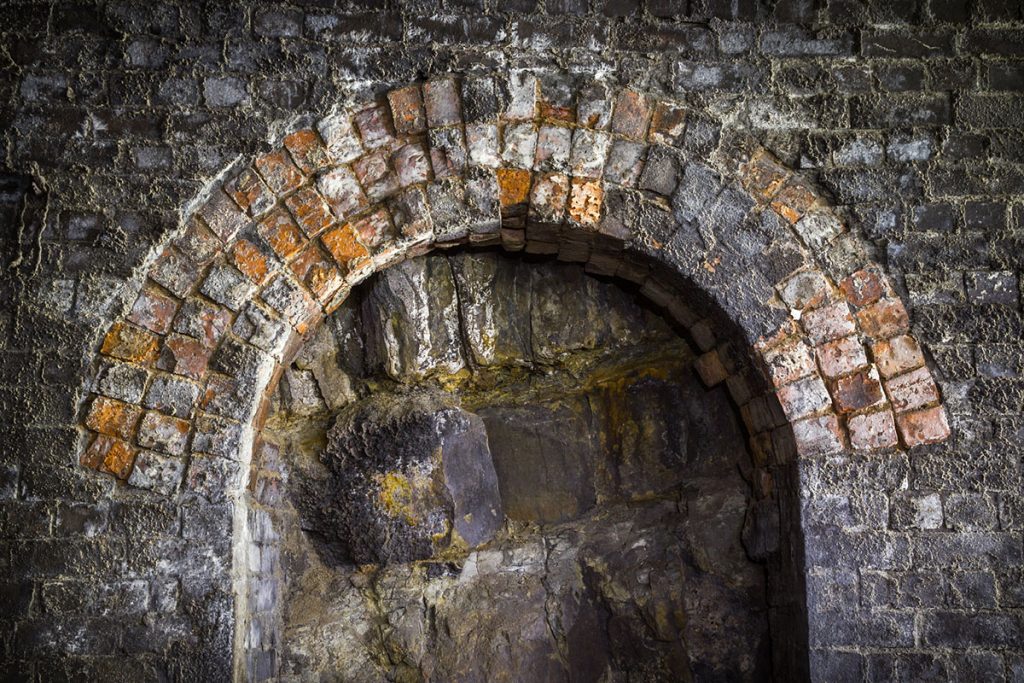
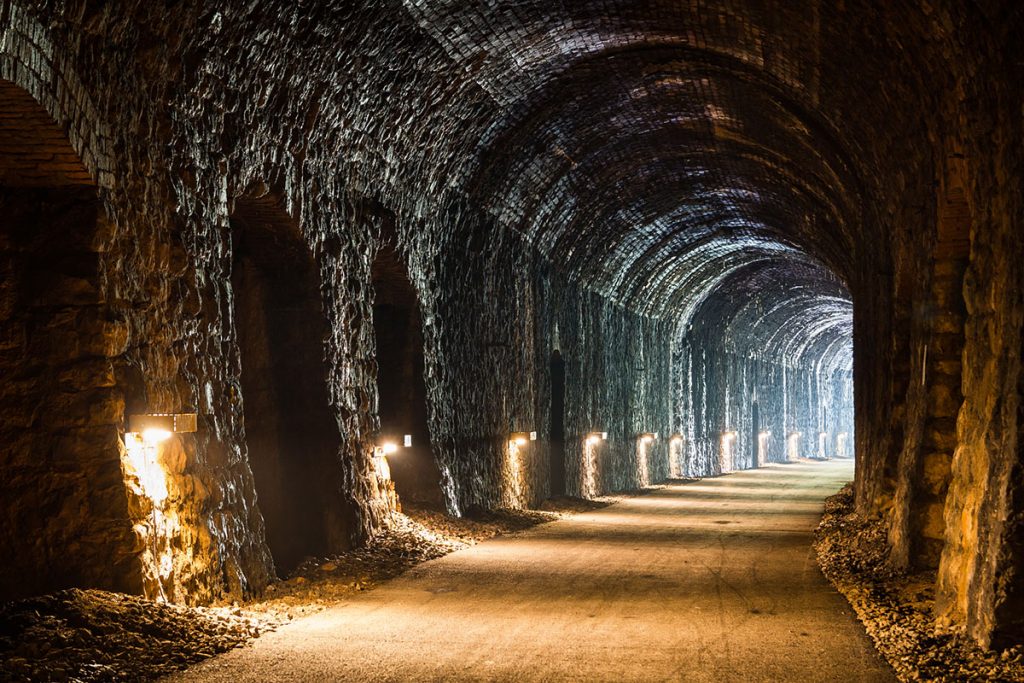
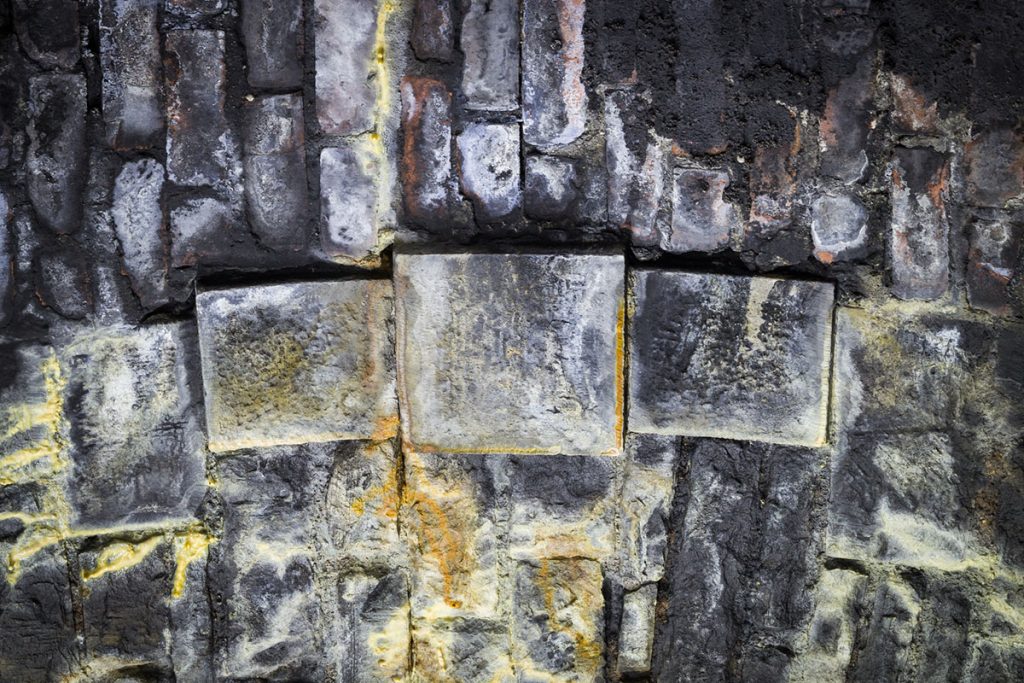
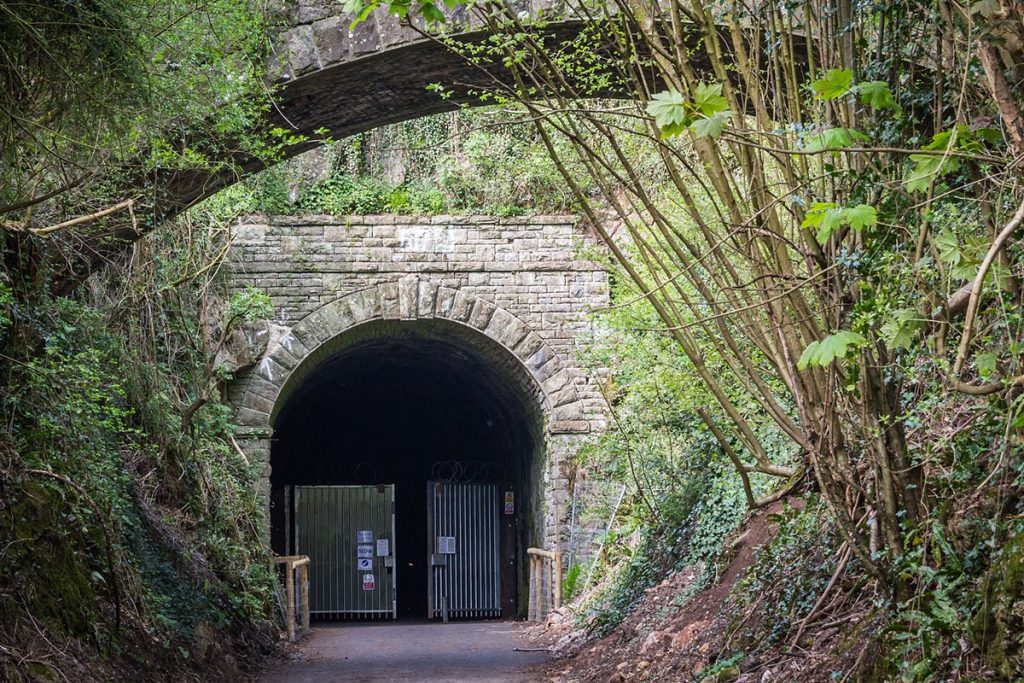
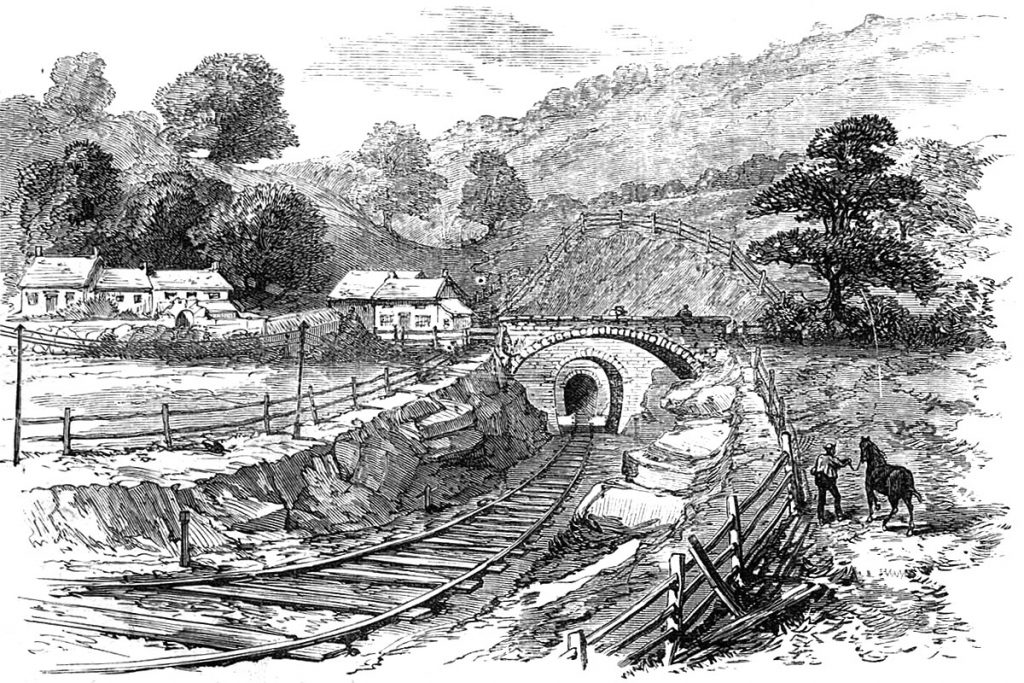

















Proposals for the Wye Valley Railway, linking Chepstow and Monmouth, were developed in 1865 and the associated bill was presented to a House of Commons committee in July 1866. At this time, the intention was to construct a line mostly on the Welsh (west) bank of the Wye, passing through the village of Tintern. This route presented considerable engineering difficulties, crossing the river and penetrating a ridge before making a junction with the South Wales Railway to the north-east of Chepstow.
S H Yockney & Son of Westminster were appointed as engineers and estimated the cost of constructing the 14½-mile route at £222,298. The steepest gradient would be 1:71 for six furlongs through two tunnels.
Two miles south of Tintern, southbound trains would be launched over the river on a viaduct before disappearing into the first tunnel, heading straight through the rock for 249 yards before emerging onto another viaduct, clinging to the vertical cliff face. After about 150 yards, the line would enter the second tunnel, curving to the east for 715 yards.
Parliamentary authority for the line was granted on 10 August 1866, but to no avail. The financial bubble around railway schemes had burst (not for the first time), with banks collapsing and investors left destitute. The proposal – along with others earmarked for this phase of railway mania – was put on the back burner.
In 1872, a revised route was agreed that crossed the Wye east of Tintern and ran south on a ledge cut into the steep slope on the English (east) bank. The minutes of a board meeting suggest a belief that this would be “probably more economical” and easier to construct. There had also been some opposition to a line through Tintern, passing very close to the historic abbey.
However the Duke of Beaufort was not pleased with this change; he had been supportive of the railway and allowed his land to be used for two-thirds of its route. He favoured a line through the village and insisted that a goods branch must be constructed to serve the wireworks there. This was authorised on 14 June 1875 by means of the Wye Valley Railway Amendment Act.
Construction work on the main line had got underway at Tintern on 26 May 1874, Messrs Reed Bros & Co being appointed as the contractor. The greatest engineering feat – a lengthy single-track tunnel – would be driven beneath Offa’s Dyke and a ridge mostly comprising limestone.
A construction shaft was sunk around 490 yards from the tunnel’s northern end; this was subsequently retained for ventilation and is mostly unlined. In February 1875, the Engineer’s Report informed shareholders that a second shaft had been excavated to expedite the work. This is thought to be 320 yards further south at a point where a spoil heap was recorded on historic maps. The tunnel is wet at this location.
In driving the tunnel’s heading, miners benefited from the use of Ingersoll rock drills, powered by compressed air. These significantly increased productivity, achieving a rate of six feet per day, allowing construction to be completed in just under 20 months.
Inevitably, the high-risk work brought many casualties, some of them fatal. William Escott, 26, was taken on to drive the horses used to haul materials along the contractor’s wagonway. On his first day in the job, one of the animals broke loose and he chased after it, but was knocked down across the track and a loaded wagon ran over him, shattering both thighs and suffering internal injuries. Faint hopes were entertained for his recovery.
But perhaps the most tragic series of events befell the Pidsley family. On 1 December 1874, Peter Pidsley – working in the heading with three others – was attempting to extricate a one-ton piece of rock with crowbars when it slipped and fell on him, resulting in instant death. He left a wife and four children.
In February 1875, four men were engaged in blasting operations in the tunnel when a charge detonated unexpectedly, severely injuring them all. Thomas Pidsley – whose wife, Elizabeth, had died shortly after their arrival in Chepstow – suffered head and facial injuries, lost an eye and had his armed amputated; he was laid up in the workhouse for three months. Then, in February 1876 – having returned to work – he fell across the wagonway and was run over, breaking one leg in three places below the knee and injuring the other.
The Wye Valley Railway was inspected by Colonel Rich for the Board of Trade on 29 September 1876, although the northern part of the line had been used by freight trains since June. The full route was officially opened on 19 October 1876, but the public service was not inaugurated until 1 November. Construction cost a little over £318,000.
As built, Tidenham (or Denhill) Tunnel extended for approximately 1,129 yards and was separated from a second tunnel of 26 yards at its south end by a short cutting. This was subsequently arched over and infilled to create a single tunnel of 1,188 yards, probably between 1900-1920. The keystones of the intermediate portals remain embedded in the arch.
The tunnel curves at both ends, to the west at the south end on a radius of approximately 35 chains, and to the east at the north end on a 25-chain radius. Its gradient is 1:100, falling to the north.
It is believed that, on opening, the tunnel was substantially unlined – the limestone being self-supporting – apart from short sections at both ends where the depth of cover was reduced. An arch was subsequently constructed through much of the southern half, supported by stone piers and brick arches. Discrete collars of brickwork have also been inserted at various locations, presumably after inspections identified fractures in the rock and the possibility of material falling onto the track.
Passenger services were withdrawn from the line on 5 January 1959, but goods trains ran until 4 January 1964. Tintern Quarry traffic continued to pass through the tunnel until December 1981 and the last train on the line headed south from Dayhouse Quarry, Tidenham, to the junction in September 1992.
Reopening of the railway as a tourist attraction has been proposed by enthusiasts, but there seems little prospect of this happening. Sustrans earmarked the trackbed for reuse as an active travel route in 2006 – part of its ambitious Connect2 programme – but the scheme was dropped due to problems obtaining planning permission.
A new scheme emerged in 2019, promoted by a charity, Greenways and Cycleroutes. Work to deliver the Wye Valley Greenway saw the extent track removed from Tidenham Tunnel in the summer of 2019 and tarmac laid in September 2020. Later that month, volunteers attended a workcamp to install 132 lighting units, brick up seven recesses to encourage bat use and fit a protective shield below the shaft.
The tunnel welcomed its first visitors on 1 April 2021 and will remain open every year until the end of September. To comply with planning restrictions, the tunnel will close during the winter months to allow bats to hibernate undisturbed.








